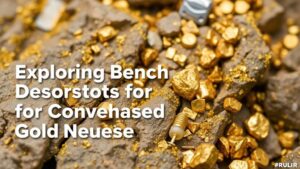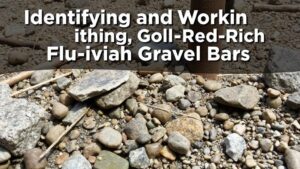How to Identify High-Value Ore Based on Agricola’s Observations of Color and Luster
How to Identify High-Value Ore Based on Agricola’s Observations of Color and Luster
The identification of high-value ores is a crucial aspect of mining and metallurgy. Georgius Agricola, a pivotal figure in the study of mineralogy and mining practices during the Renaissance, contributed significantly to our understanding of ores through his observations of their color and luster. This article delves into Agricola’s insights and how modern mineralogists and geologists can apply his techniques to identify valuable ores.
Agricolas Contributions to Mineralogy
Agricolas seminal work, De Re Metallica, published in 1556, cataloged various minerals and their properties. His detailed descriptions of ores, particularly their color and luster, laid the foundation for systematic mineral identification. Agricola emphasized the importance of observing visual characteristics in the field, enabling practitioners to distinguish between high-value and low-value ores.
Understanding Color in Mineral Identification
Color is one of the most immediate visual characteristics when identifying ores. Agricola observed that the colors of minerals are often indicative of their chemical composition. For example, copper ores can exhibit a range of colors depending on oxidation states: purplish hues indicate the presence of azurite, while bright blue often points to chrysocolla.
In modern mineralogy, color can be a useful, though not definitive, indicator. Certain minerals may exhibit different colors based on impurities or exposure conditions. So, it is essential to combine color analysis with other techniques for more accurate identification.
The Role of Luster
Luster refers to the way light interacts with the surface of a mineral. Agricola classified luster into various types, which is still relevant today. Luster can be categorized as:
- Metallic: Reflects light similarly to polished metal; often seen in ores like galena and pyrite.
- Vitrous: Glass-like appearance, common in quartz and fluorite.
- Pearly: Resembles the sheen of pearls, seen in talc and some gypsum.
- Resinous: Similar to resin, observed in substances like amber and certain coal types.
Identifying luster can help differentiate high-value ores from low-value minerals. For example, the metallic luster of a mineral like galena, known for its lead content, can signal high economic value compared to a dull or non-metallic substance.
Practical Applications of Agricola’s Techniques
Mineral identification based on color and luster has practical implications in the mining industry today. When approaching a potential mining site, modern geologists and prospectors utilize portable spectrometers to obtain quick readings, which help confirm Agricola’s observations through scientific analysis. These technologies can assist in identifying valuable ores quickly and efficiently.
Also, Agricolas principles can be applied in educational settings. For example, mineralogy students often engage in hands-on exercises using mineral samples to practice identifying ores based on color and luster. This experiential learning reinforces the foundational concepts Agricola established centuries ago.
Challenges and Limitations
While Agricola’s observations are valuable, there are challenges to relying solely on color and luster for ore identification. Some minerals may undergo weathering, altering their appearance. Plus, highly variable ores may exhibit a range of colors and lusters that complicate identification. To address these challenges, geologists may employ additional methods, such as:
- Petrographic analysis: Examining mineralogical properties under a microscope.
- Geochemical assays: Testing for specific elements to confirm the presence of valuable ores.
- X-ray diffraction: Analyzing crystal structures for accurate mineral identification.
Actionable Takeaways
To effectively identify high-value ores using Agricolas observations, consider the following steps:
- Conduct visual assessments focusing on color and luster as initial indicators.
- Complement visual analysis with advanced mineral identification techniques.
- Engage in hands-on practice with mineral samples to enhance observational skills.
- Stay updated with modern mineralogical technologies for accurate assessments.
By integrating Agricola’s methodologies with contemporary advancements, prospectors and geologists can refine their abilities to identify and evaluate high-value ores efficiently.



